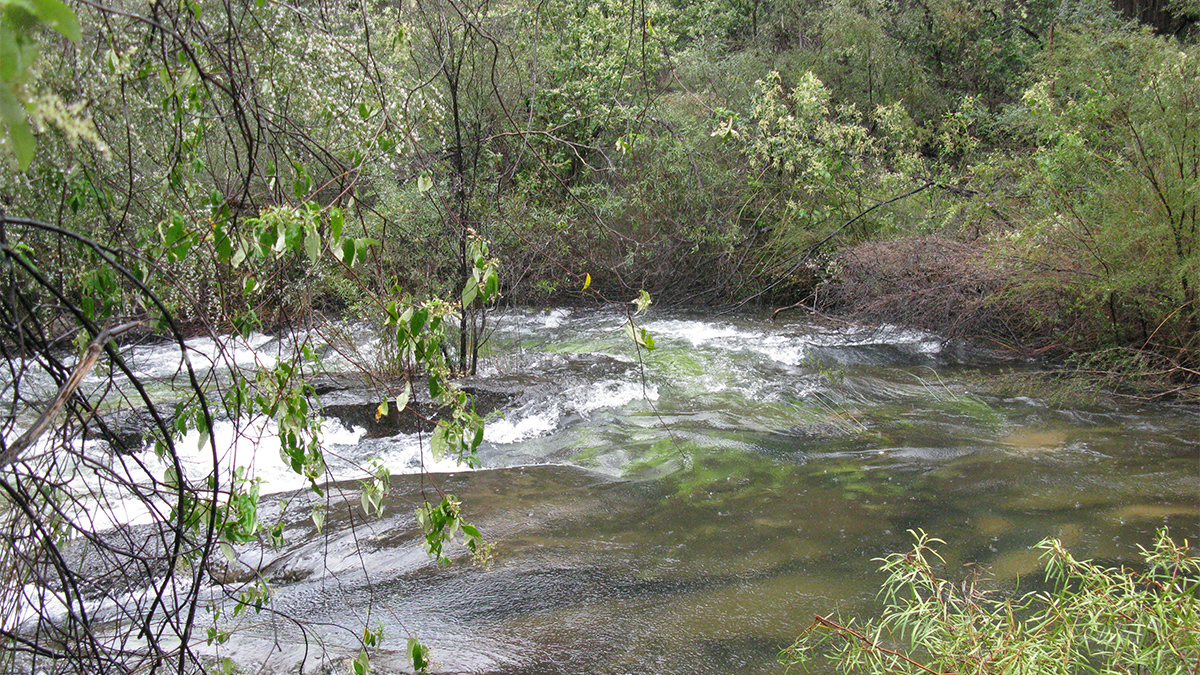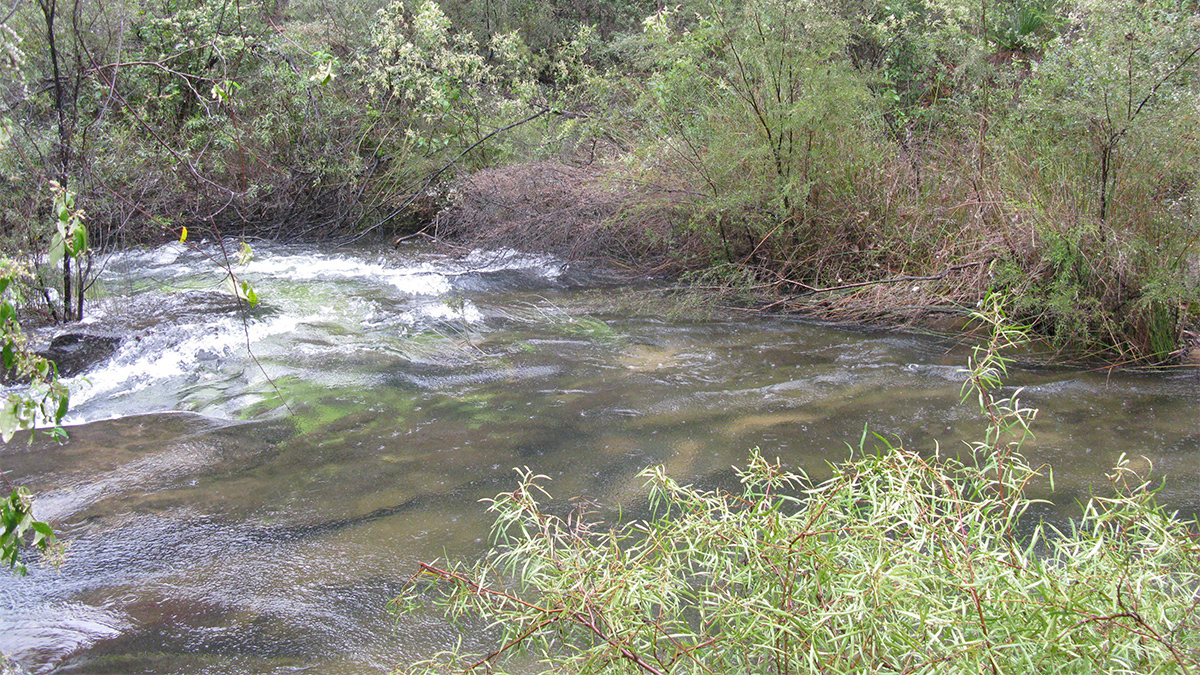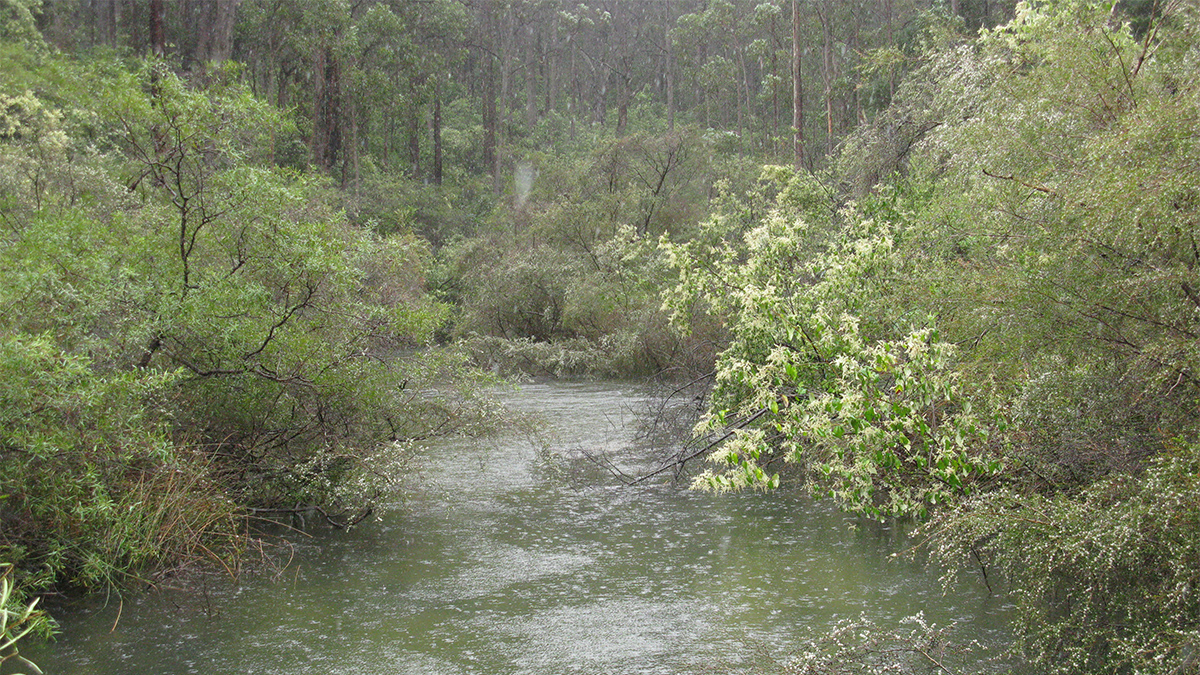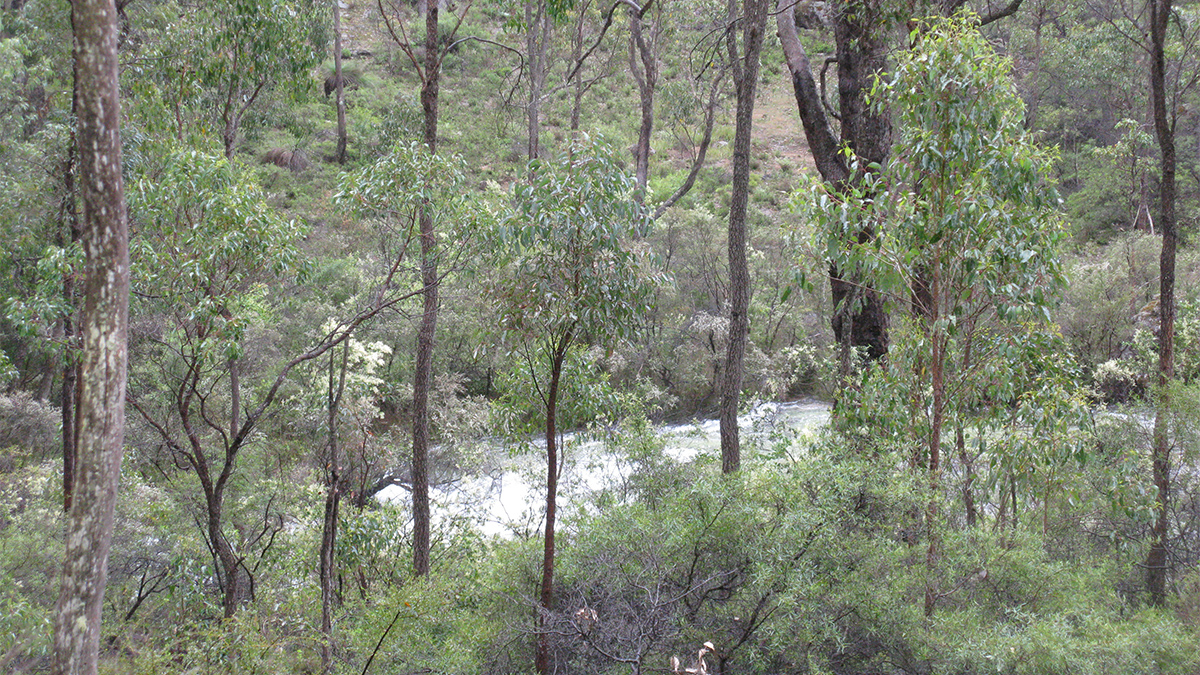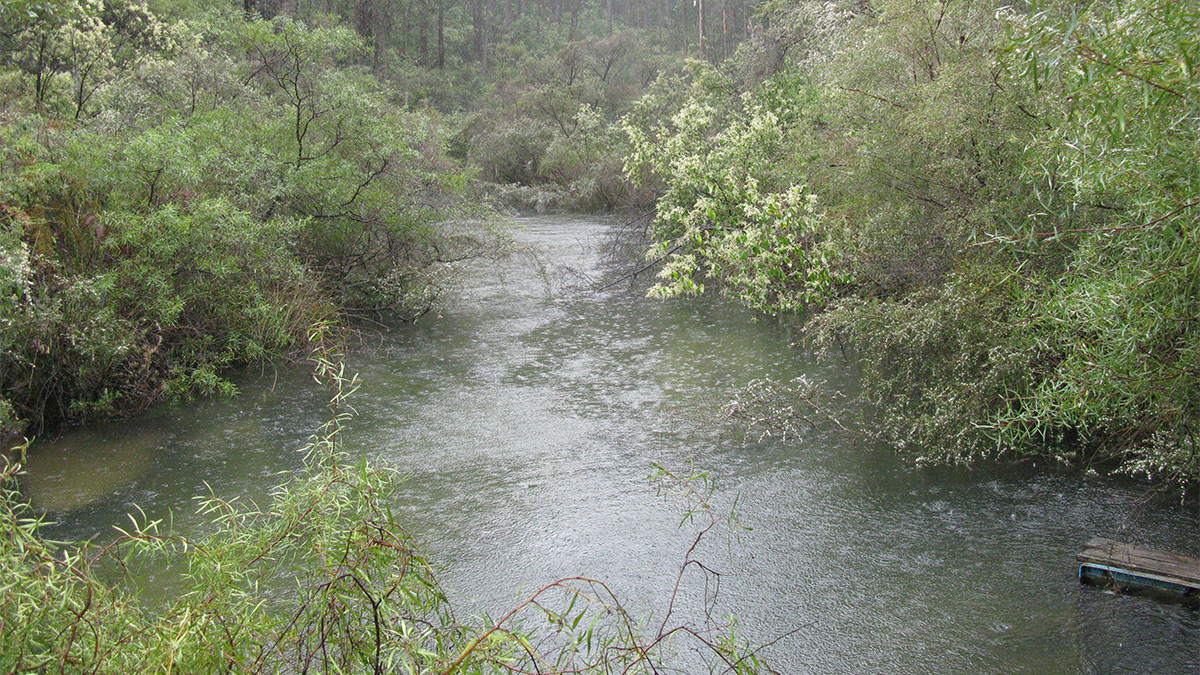
Samson Brook - Downstream Samson Brook Dam 2
Basin : Harvey River
Catchment : Harvey River
The condition of the Samson Brook - Downstream Samson Brook Dam 2 site (site code: SAM-02/6131314), in the upper catchment of the Samson Brook, was assessed between 8 and 9 October 2009, over a 100-m length of stream. At this time no previous assessments of river ecology had been reported.
The assessment was conducted using standard methods from the South West Index of River Condition. Measures chosen for this assessment included fish and crayfish, macroinvertebrates, aquatic habitat, water quality (dissolved oxygen and temperature logged over 24h, and electrical conductivity, pH, colour, alkalinity, turbidity and nutrients), fringing vegetation, channel morphology, erosion, connectivity, local land use and flow.
Condition summary
The site was assessed as part of a national assessment of river condition – view report here.
An online condition summary for this site has not been prepared. For other site data please contact the department’s River Science team (provide the site code and sampling dates). See below for links to information on species found at the site, and images taken in October 2009.
Fish and crayfish
One fish and two crayfish species were found at this site in October 2009.
Native species found:
Cherax cainii (smooth marron)
Cherax quinquecarinatus (gilgie)
Non-native species found:
Oncorhynchus mykiss (rainbow trout)
Only fish and crayfish are targeted by sampling methods, other species found include: Palaemon australis (south-west glass shrimp).
Note: collection of fauna from inland aquatic ecosystems across Western Australia requires a license from the Department of Primary Industries and Regional Development (DPIRD) and the Department of Biodiversity, Conservation and Attractions (DBCA). All species collected must be reported to these agencies as part of license conditions.
Species found in subcatchment
Explore other sites in the catchment
- Bancell Brook - Bancell Brook Downstream of weir
- Bancell Brook - Bancell Brook Upstream of weir
- Drakes Brook - Downstream Drakes Brook Dam
- Drakes Brook - Downstream of Dam Wall
- Drakes Brook - Upstream Drakes Brook Dam
- Drakesbrook Drain
- Harvey Main Drain - Bristol Road
- Harvey Main Drain - Bristol Road restoration
- Harvey Main Drain - Johnston Road
- Harvey Main Drain - Riverdale Road
- Harvey River - Clifton Park
- Harvey River - Hanson Road
- Harvey River - Homestead Road
- Harvey River - River Road
- Harvey River - Sunnyvale Gauging Station
- Harvey River - Track Off Dingo Road
- Harvey River - Upstream of Dingo Road Gauging Station
- Harvey River - Upstream of Pig Camp
- Harvey River MD - Riverdale Road restoration
- Logue Brook - Clifton Road
- Logue Brook - Logue Brook Dam Road
- Logue Brook - South Western Highway
- Logue Brook Drain - Trotter Road
- Mayfield Drain - Old Bunbury Road
- Samson Brook - Downstream Samson Brook Dam 1
- Wokalup Creek - Downstream Wokalup Dam
